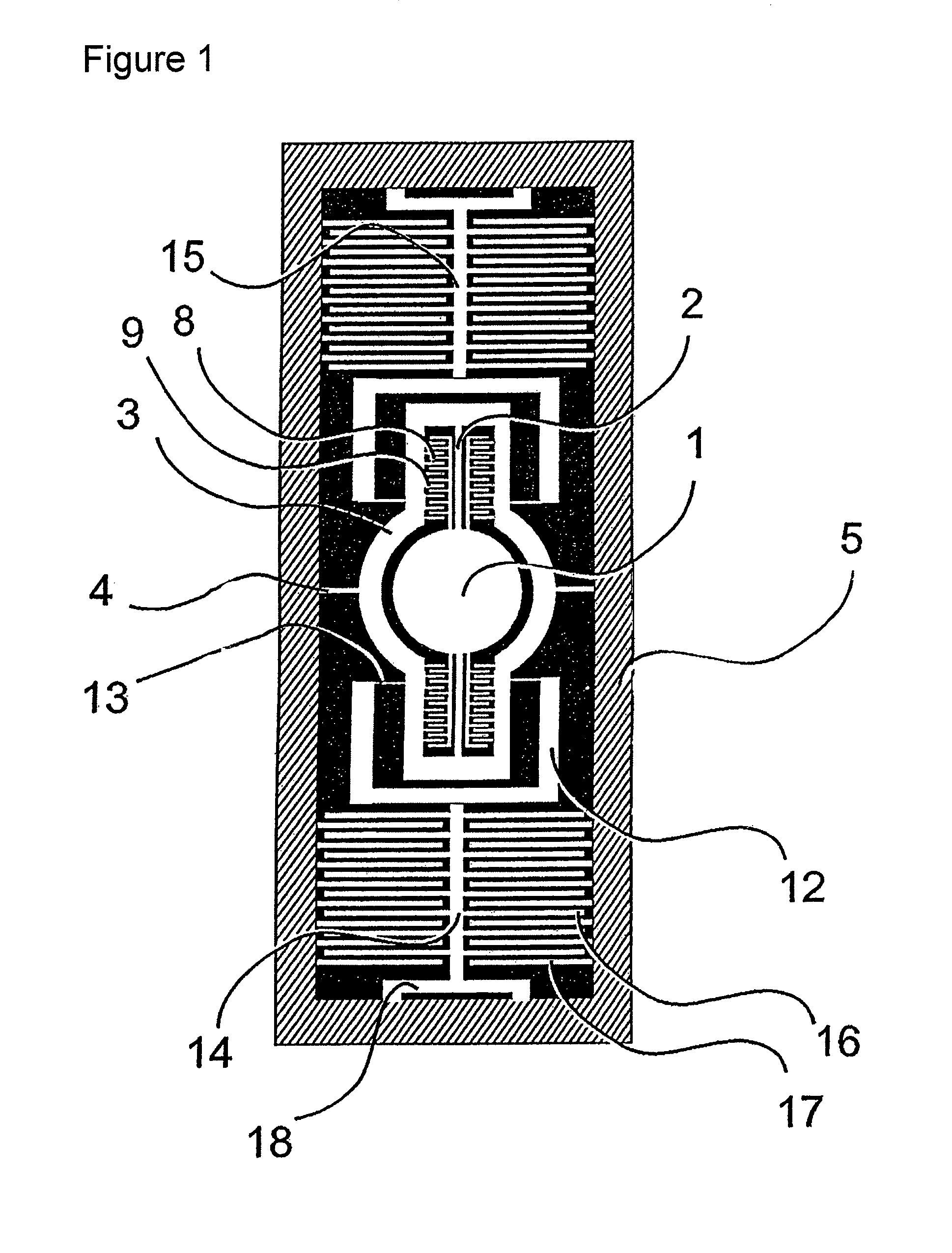Electrostatic comb-drive micromechanical actuator
a micromechanical actuator and comb-drive technology, applied in the direction of electrostatic generator/motor, optics, instruments, etc., can solve the problems of high metallic mass, less suitable for mass production, and high cost of hybrid-mounted systems, so as to achieve the effect of simple hermetically sealed wafer level packaging, increased length and suitably increased torqu
- Summary
- Abstract
- Description
- Claims
- Application Information
AI Technical Summary
Benefits of technology
Problems solved by technology
Method used
Image
Examples
Embodiment Construction
[0039]In what follows configurations for dual-axis micro-mirror scanners according to the present invention are elucidated; these have a mirror diameter of at least 1 mm and a slow axis resonant frequency of around 1 kHz or higher, and enable a mechanical deflection angle for the slow axis of around + / −7° or more. Here FIGS. 1 and 2 show configurations of such a micro-mirror scanner, in which at the same time, a small chip edge length is achieved in the dimension parallel to the mirror surface.
[0040]The configuration of FIG. 1 shows a micro-mirror 1 that is suspended via torsion springs 2 about a tilting axis running along the torsion springs 2 (inner tilting axis) such that it can rotate in a moving frame (gimbal) 3 surrounding it. The micro-mirror 1 can be tilted about the inner tilting axis in the moving frame 3, by means of two electrostatic tilt drives that have vertically offset comb electrodes 8, 9. The moving frame 3 (inner frame) is in turn suspended via torsion springs 4 a...
PUM
 Login to View More
Login to View More Abstract
Description
Claims
Application Information
 Login to View More
Login to View More - R&D
- Intellectual Property
- Life Sciences
- Materials
- Tech Scout
- Unparalleled Data Quality
- Higher Quality Content
- 60% Fewer Hallucinations
Browse by: Latest US Patents, China's latest patents, Technical Efficacy Thesaurus, Application Domain, Technology Topic, Popular Technical Reports.
© 2025 PatSnap. All rights reserved.Legal|Privacy policy|Modern Slavery Act Transparency Statement|Sitemap|About US| Contact US: help@patsnap.com



